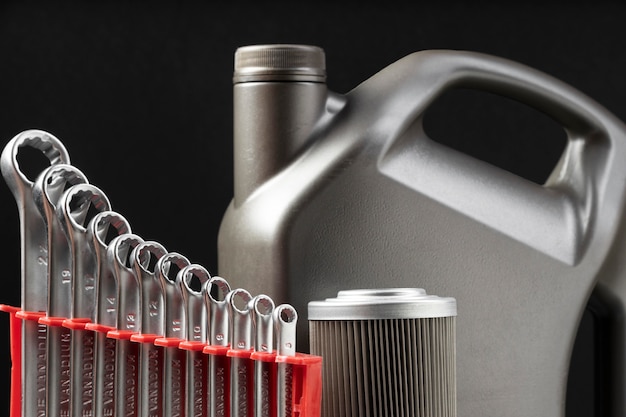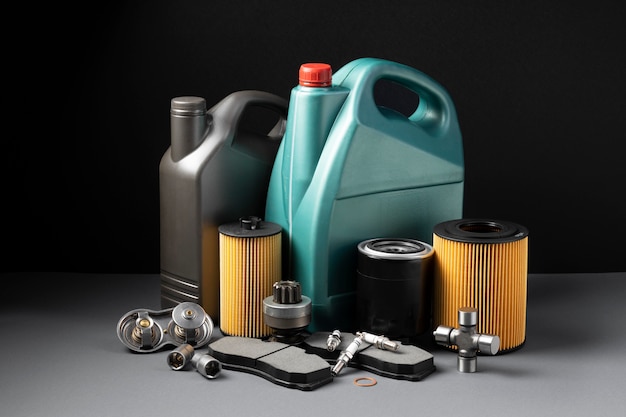How Often to Change Oil and Filters in Asian, German, and American Cars

I’ve spent enough years under hoods to know that skipping oil and filter changes is a gamble—one you’ll almost always lose. Think of oil as your engine’s blood. It keeps everything running smooth, clean, and cool. Filters catch the junk before it does damage.
Let those intervals slip and you’re looking at sludge, overheating, and all sorts of weird noises. Worse yet, repairs get expensive fast. Staying on top of your oil and filter changes is the cheapest insurance you can buy for any car, whether it’s a Honda, BMW, or classic Ford.
How Often Should You Change Oil and Oil Filter?

Let’s get straight to it: how often should you change the oil filter and oil? Most modern cars—Asian, German, or American—have clear recommendations, but real life isn’t always that simple. The classic rule used to be every 3,000 miles, but that’s old news for most new cars.
Nowadays, oil filter change intervals usually fall between 5,000 and 10,000 miles, depending on the car, oil type, and your driving style. If you’re hammering the gas pedal, idling in traffic, or running a work truck, you’ll want to change oil and oil filters more often. And don’t forget about time: even if you don’t hit the mileage, oil degrades after a while.
Factory Recommendations vs. Real-World Practice
Factory schedules are a good baseline, but I’ve seen plenty of engines go bad early because folks stretched those intervals. Stick close to the manufacturer’s advice, but if you drive in harsh conditions—hot Texas summers, stop-and-go commutes, or lots of short trips—play it safe and shorten your oil and oil filter replacement interval just a smidge.
Average Oil Change Miles: Asian, German, and American Cars Compared
Not all cars are created equal when it comes to oil change miles. Asian cars like Toyota and Honda tend to have longer intervals, thanks to efficient engines and high-quality oils. German cars—think BMW or Mercedes—push the limits with synthetic oils, claiming up to 10,000 or even 15,000 miles between changes. American brands sit somewhere in between, but it really depends on the model and year.
- Asian brands (Toyota, Honda, Hyundai): 5,000–7,500 miles is the sweet spot for most, though some push 10,000 with synthetic oil.
- German brands (BMW, Mercedes, Audi): 7,500–10,000 miles, but I recommend checking the dipstick and the oil’s color before stretching it to the max.
- American brands (Ford, Chevy): 5,000–7,500 miles, but older models or heavy-duty trucks might need it sooner.
Check out controversial opinions if you want to dive into the debates about shorter intervals in Japan versus the US.
Factors Affecting Recommended Miles for Oil Change
Driving habits, oil quality, and even the climate play a role in your recommended miles for oil change. Stop-and-go traffic, towing, or frequent short trips can dirty up your oil faster. Synthetic oils allow for longer intervals, but they’re not magic. Always check your owner’s manual, but also keep an eye (and nose) on your oil. If it looks or smells burnt, don’t wait.
Oil Filter Change Interval: What Manufacturers Suggest

The oil filter replacement interval often matches up with oil changes, but not always. Most manufacturers say you should change the oil filter every time you change the oil. That’s my rule in the shop—I don’t mess around with half measures. Filters are cheap insurance against engine wear.
Some European makers will say it’s fine to swap the filter every other oil change, but after seeing filters loaded with sludge, I don’t recommend it. For the best engine health, keep your oil filter change interval synced with your oil change. It’s a small cost for peace of mind and a happy engine.
How Many Months for an Oil Change? Oil Change Timeframes Explained
Not everyone hits the mileage limits each year. So, how many months for an oil change? Most automakers suggest changing your oil every 6 months, even if you haven’t driven much. Oil breaks down over time, picking up moisture and losing its protective punch.
I always tell customers: if you’re putting very few miles on your car, an oil change every 6-12 months is smart. For most folks, twice a year fits the bill. If you drive a lot, stick to the car engine oil change miles in your manual.
And if you’re in a region with wild weather swings—cold winters, hot summers—err on the side of caution. Oil hates sitting for too long, and engines don’t like the stuff getting old and gummy.
Oil Change Services We Do for BMW: German Cars as an Example

German cars, especially BMWs, have their own quirks. At my shop, we handle oil change servicees we do for bmw with a close eye on the manufacturer’s guidelines. Most BMWs run with synthetic oil, and they’ll tell you 10,000 miles or 12 months between changes. My personal advice? Cut that a little short—around 7,500 miles—especially if you drive hard or do a lot of city driving. A fresh oil filter every change is a must, too.
Honda Oil Change: Typical Intervals for Popular Asian Models
Honda engines are tough, but even they need regular oil changes to stay happy. For most recent Hondas, the oil change interval is 7,500 miles or once a year, whichever comes first. I’ve seen some customers stick to the dashboard reminder, but I always suggest erring on the early side, especially if you do lots of short trips or drive in dusty areas.
- Honda Accord/Civic/CR-V: 7,500 miles or 12 months (synthetic oil)
- Older Hondas or those using conventional oil: every 5,000 miles or 6 months
- If your car’s Maintenance Minder says it’s time, don’t wait around—get it done
We handle honda oil change services all the time, and it’s one of the easiest ways to keep your engine running for years.
Ford as an Example: American Car Oil and Filter Replacement

Ford vehicles, especially trucks, work hard and need regular attention. I recommend following the ford as an example service schedule: usually every 5,000–7,500 miles for both oil and filter. If you tow, drive in extreme heat, or idle a lot, go for the shorter interval. Keeping up with oil and filter changes is the best way to keep your Ford’s engine purring, whether it’s a Mustang or an F-150.
Signs You Need an Oil Change: How Far Can You Drive When You Need an Oil Change
Sometimes life gets busy and you miss your oil change. How far can you drive when you need an oil change? That depends on how overdue you are and what kind of oil you’re using. If you’re only a few hundred miles past your recommended interval, you’re probably fine in the short term—but don’t make a habit of it.
Watch for signs: the oil change light comes on, the oil looks dark and gritty, the engine sounds louder, or you notice a burnt smell. If any of these show up, get your oil and filter changed ASAP. Don’t try to squeeze in another road trip; you’re playing with fire (and engine wear).
My rule? Don’t push more than 1,000 miles past the recommended oil change time. It’s like ignoring a check engine light—eventually, it’ll catch up with you.
Quick Reference: Recommended Miles and Months for Oil and Filter Changes
If you want the fast answer, here’s a cheat sheet to recommended oil and oil filter change intervals. Keep in mind: always double-check your owner’s manual and consider your driving style and conditions.
| Car Type | Oil Change Interval (Miles) | Oil Change Interval (Months) | Oil Filter Change Interval |
|---|---|---|---|
| Asian (Honda, Toyota) | 5,000–7,500 | 6–12 | With every oil change |
| German (BMW, Mercedes) | 7,500–10,000 | 12 | With every oil change |
| American (Ford, Chevy) | 5,000–7,500 | 6–12 | With every oil change |
Stick to these numbers and your car’s engine will thank you. And if you’re ever unsure, swing by the shop—we can check your oil and let you know if it’s time for a change.
